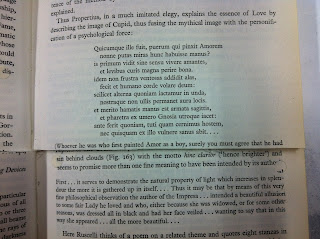
I had custody of the book over the Christmas holidays, and my first idea was to take the book on holiday with me, as I was going away for New Year. I was going to take it on a journey, and photograph the book in different locations, as a sort of diary. The more I thought about this the more reasons for not doing it became apparent. Basically it seemed quite a boring idea, and also there was the danger that I would lose the book, or leave it in a field somewhere in Staffordshire. As I looked at the book its increasing fragility was very noticeable, and I began to treat it as a ‘rare’ object, so much so that I felt I ought to be wearing white gloves to turn its pages. So that is my intervention – to supply a pair of white gloves, which attach to the book with a cord, so that the reader can choose or not to wear them. I found out later a couple of interesting things about white gloves – there is a website for items of clothing for masons, and white gloves are advertised for this, and white gloves are worn by magicians, which I had forgotten about. Finally I enclose information from the British Library, which no longer recommends the use of white gloves when handling precious books! The choice is yours.
The use of white cotton gloves for handling collection items
Written by Jane Pimlott, Preservation Coordinator
General practice at the British Library
The British Library takes appropriate use and handling of collection items seriously and
we provide guidance to staff, visitors and readers on how they should handle different
types of material.
Above: Letters of different sizes can be difficult to handle
when wearing gloves
In general we do not use or provide white gloves for use with collection items. Clean dry hands, free from
creams and lotions, are preferable in the majority of circumstances. Wearing cotton gloves when handling
books, manuscripts or fragile paper items reduces manual dexterity and the sense of touch, increasing the
tendency to 'grab' at items. The cotton fibres may lift or dislodge pigments and inks from the surface of pages
and the textile can snag on page edges making them difficult to turn. All these factors increase the risk of damage to collection items.
We have reinforced the importance of having clean dry hands to readers by developing
an icon which is displayed in reading rooms and in leaflets. A series of
the British Library website also demonstrates how various types and format of collection
items are used. Included in this series is a video called ‘Using Gloves with Collection
Items’.
short videos onWhen should gloves be worn?
Staff will advise readers if they need to wear gloves when handling a particular collection
item. Gloves are used when handling certain materials, for example, lead seals or when
touching the surface of a globe. In someinstitutions it is common practice to use gloves
when viewing photographs to protect the surface of the image, but in the British Library
these items are generally issued in protective sleeves or mounts making this unnecessary.
Above: The surface of a globe being examined while
wearing white gloves
Research
Research into the use of white gloves by Dr. Cathleen A. Baker and Randy Silverman is
published in the article
of International Preservation News. They discuss that ‘
gloves provide no guarantee of protection from perspiration and dirt. Further, they
increase the likelihood of physical damage occurring to paper-based collection material
by blunting the sense of touch ..…implementing an institutionally monitored, handcleaning
policy is a reasonable and effective alternative to protecting artefacts from
damage while promoting the essential humanistic experience of touch
looks at the history of wearing white gloves; a relatively recent phenomenon.
‘Misperceptions about white gloves’ in the December 2005 issuecontrary to popular opinion,’. The article alsoItems on television
When collection items are seen on television, for the same reasons given above, gloves
are not usually worn. Any handling during filming is, however, always closely supervised.
In normal circumstances access to extremely rare and valuable items is highly restricted.
With some rare and valuable items, filming may be one of the few occasions when we
permit access, to allow a wider audience to see and appreciate a restricted item.






